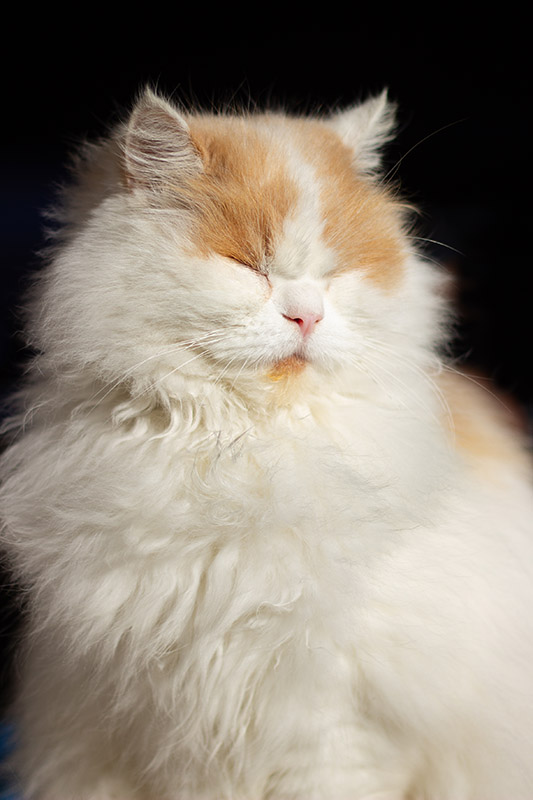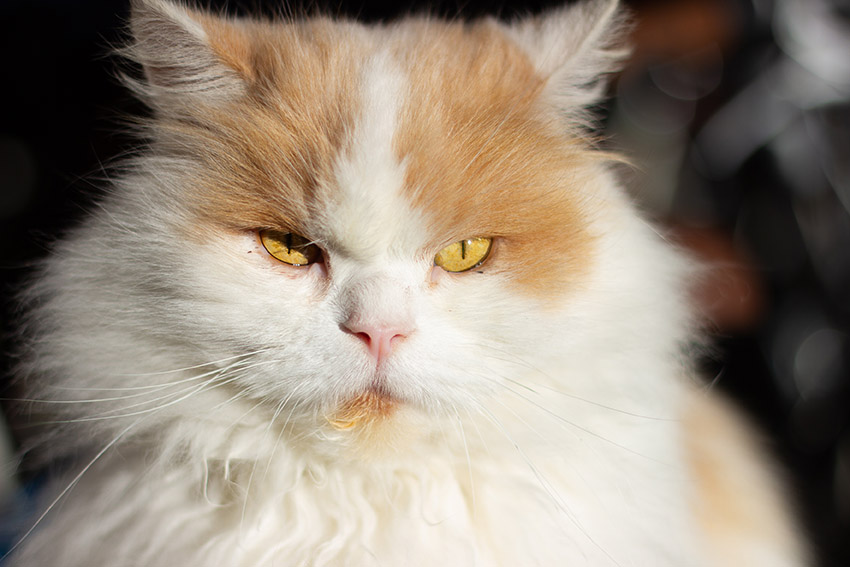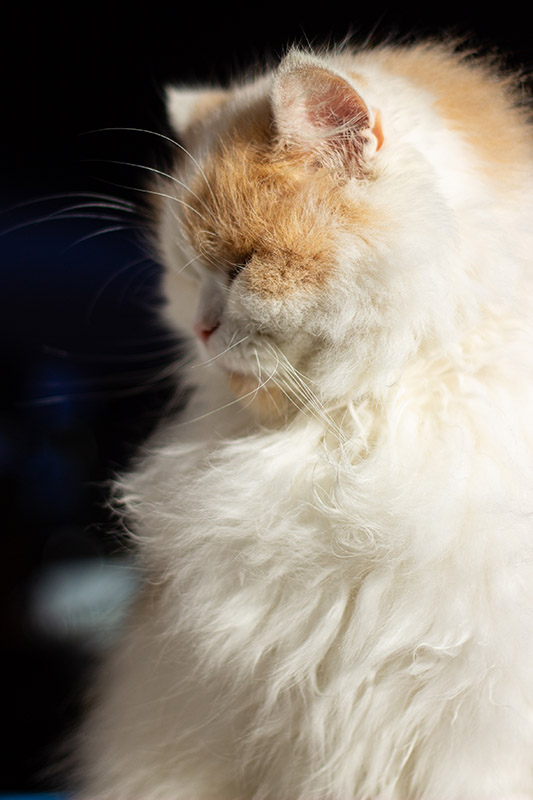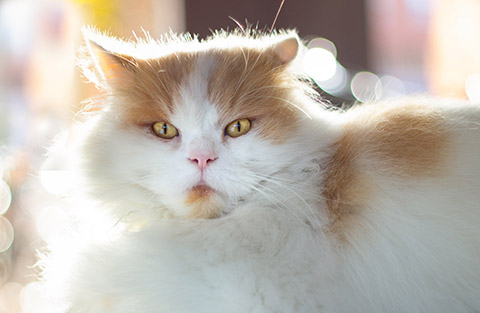
Get close and mind the light
The perfect cat picture
He looks so cute enjoying the afternoon sun. You can’t help yourself. You take out your phone and snap a few photos of Doerak the university cat, documenting his fluffiness. You think the pictures will be great. But when you scroll through your photos, all you see is a fuzzy hairball with eyes.
If the internet is to be believed, we are a society obsessed with cats: we love cat pictures, cat videos, cat memes, anything remotely related to cats. The university museum is even organising an exhibition about the phenomenon of campus cats this month (see box).
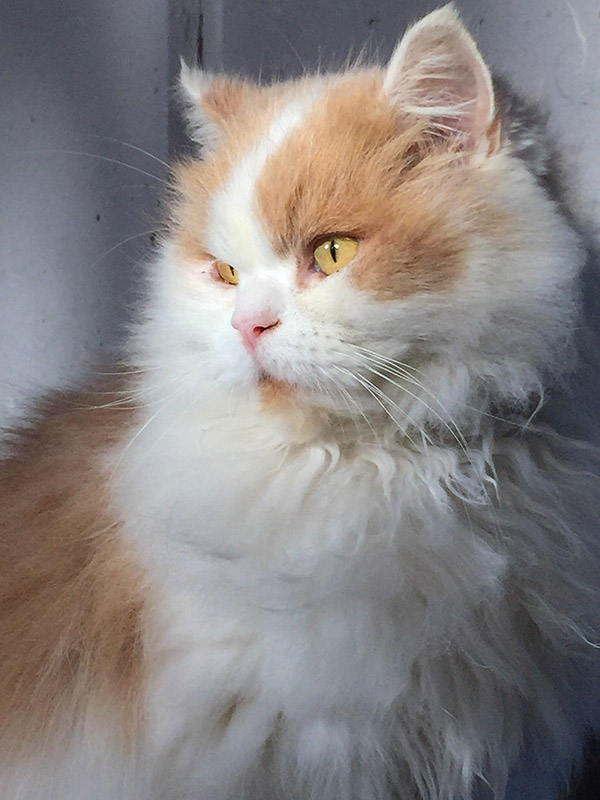
But unlike your typical cat fanatic, Germes knows what she’s doing. In addition to headshots, she also photographs pets – especially cats and dogs. ‘It’s difficult to get animals to sit still. They’re like children’, she says. ‘You can put a cat in position, but he’ll do whatever he pleases anyway.’
So, you likely won’t shoot a museum-worthy picture of Doerak in the brief moment you have to grab a picture between classes. Animal photography takes an enormous amount of patience. ‘Most of my cat photos look like the animal is posing because they look so good. But usually it’s just a matter of taking endless photographs until you get one good one.’
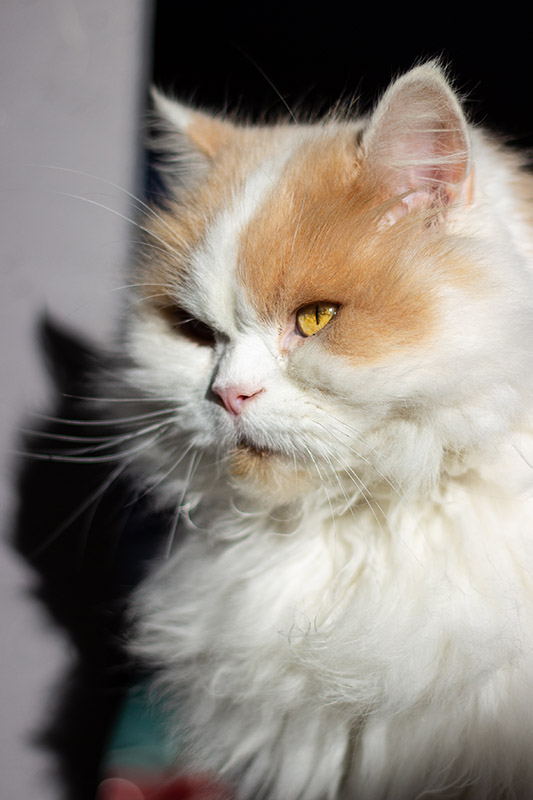
If you don’t have that kind of money, or if all you have is a cell phone, don’t worry: you can get great pictures with that, too. ‘Your best bet is to photograph a cat that’s resting’, Germes says. After you’ve found your cat, you need to pay attention to the light. Don’t photograph anything in direct sunlight, Germes says: ‘A kind of cloudy, but still semi-bright sky is best.’
Position yourself in such a way that you’re photographing in the ‘direction of the light’. ‘Make sure to have the sun at your back, or at most at your side.’ If the sun is right behind your subject – the cat – your camera will get confused: ‘It will get blinded and adjust, and your subject will just be a cat-shaped silhouette.’ Backlighting can be really nice, but you have to know what you’re doing. If you don’t, it’s best to avoid it.
Another golden tip: position yourself at the cat’s eye level and focus your camera on its eyes. ‘The eyes are their most important feature. You can really capture their personality. A lot of people photograph cats from above, but that hardly ever works unless the cat is actually looking up.’
Think about what you want to capture and what you don’t. ‘Zoom in and take a close-up of the cat’, Germes recommends. If you leave too much distance between you and your subject, your final picture will look messy. You also need to look at the colour of your background. ‘Doerak’s fur has a lovely light hue, so he’d be best photographed against a dark background.’
On Tuesday afternoon, Doerak is the perfect subject. Germesfinds him at his regular hangout behind the Harmonie building, sitting on the back of a bike parked against a grey concrete pillar. ‘Fantastic’, she murmurs every few clicks of her camera. ‘Those eyes. That fur.’
She occasionally needs to adjust her camera, which is easier said than done as she’s working with the UKrant’s Canon rather than her own trusty Nikon. But she keeps shooting, until even experienced diva Doerak gets overwhelmed. He jumps off the bikes and traipses off, his fluffy tail cocked at a reproachful angle in the air. ‘I’m a little obsessed’, Germes says, grinning.
Doerak connects
University museum director Arjen Dijkstra admits it: he doesn’t really care about cats. All the same, it was his idea to dedicate an entire room this December to the campus cat phenomenon. ‘It kind of started as a joke’, Dijkstra says. ‘Doerak became so popular online.’ He saw a golden opportunity to lure people to the museum, which recently re-opened to the public.
But the exhibition is also serious, he says. ‘Looking at the history of the RUG, you can see the connection between the academic community and the university erode. But everyone loves cats, and that connects us.’ The RUG is not the only university that has a campus cat; all over the world, institutes treasure their feline fellows.
The University museum put out a call on Twitter and the RUG website: ‘Send us your Campus Cat pictures!’ You can send in your pictures to [email protected] until 10 December. The twenty best photographs will be included in the exhibition.
Campus cat
Dijkstra: ‘Anyone can send in photos. The only rule is that it’s a picture of a university cat. And we’d like a caption and the social media information.’ The museum will not only show pictures, but cat scientific paraphernalia of all kinds. ‘We have skulls, and stuffed cats. One of them has half its skeleton exposed. It’s pretty scary.’
The university community has a had a long-standing love affair with cats. Doerak not the first university cat. ‘There have been at least three others’, says Dijkstra. ‘In the nineties we had the Academy cat.’ When someone took her to the vet because of her enlarged stomach, she turned out to be a he. And he was ill. ‘So that cat unfortunately died. And once Doerak dies, the entire RUG will mourn him.’
But at least we’ll always have the pictures.
The cat exhibition will open on 17 December at the University museum. RUG students and staff can enter for free. Regular tickets are 1.50. If you show up with a printed cat picture you get a 50 percent discount.


